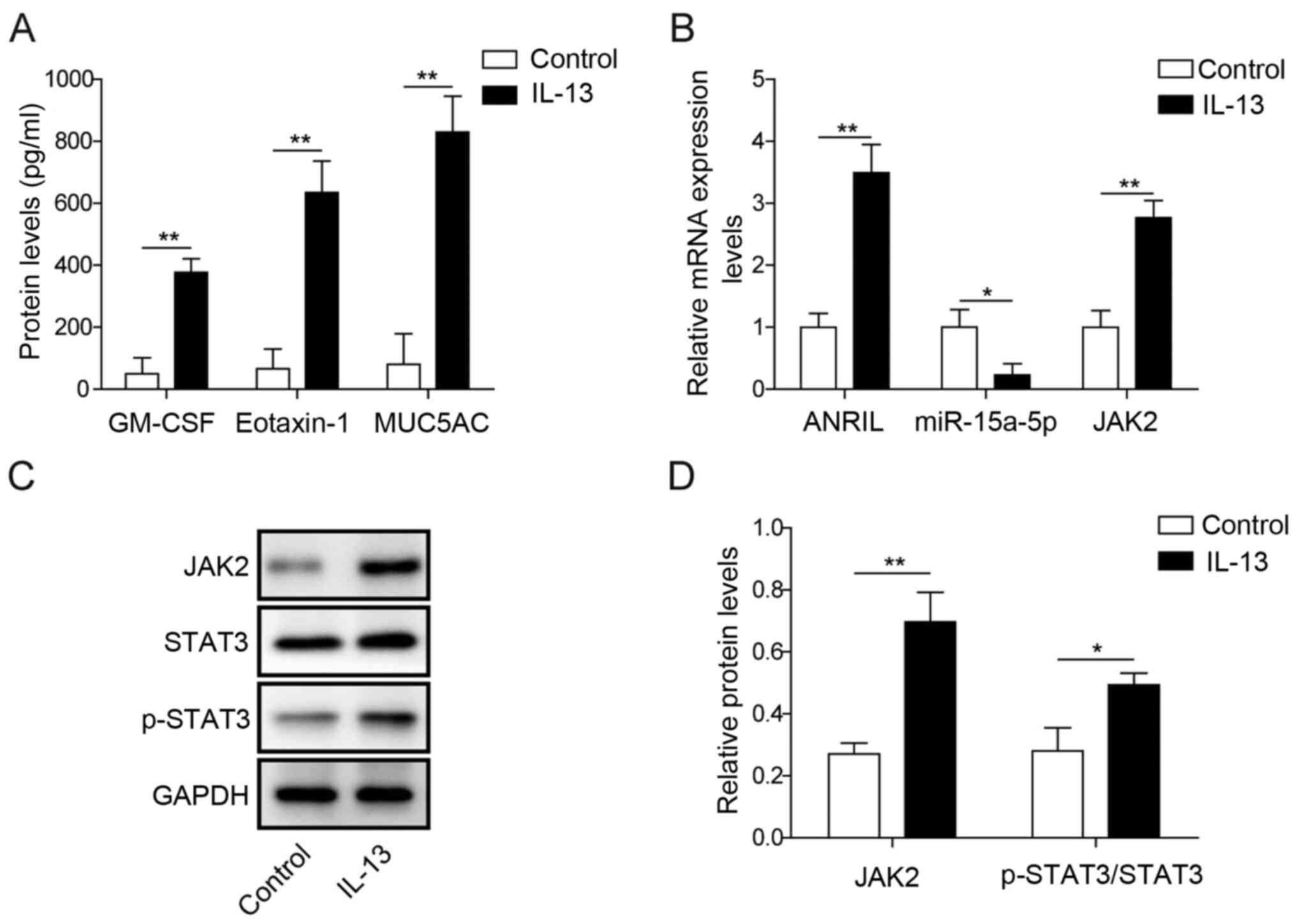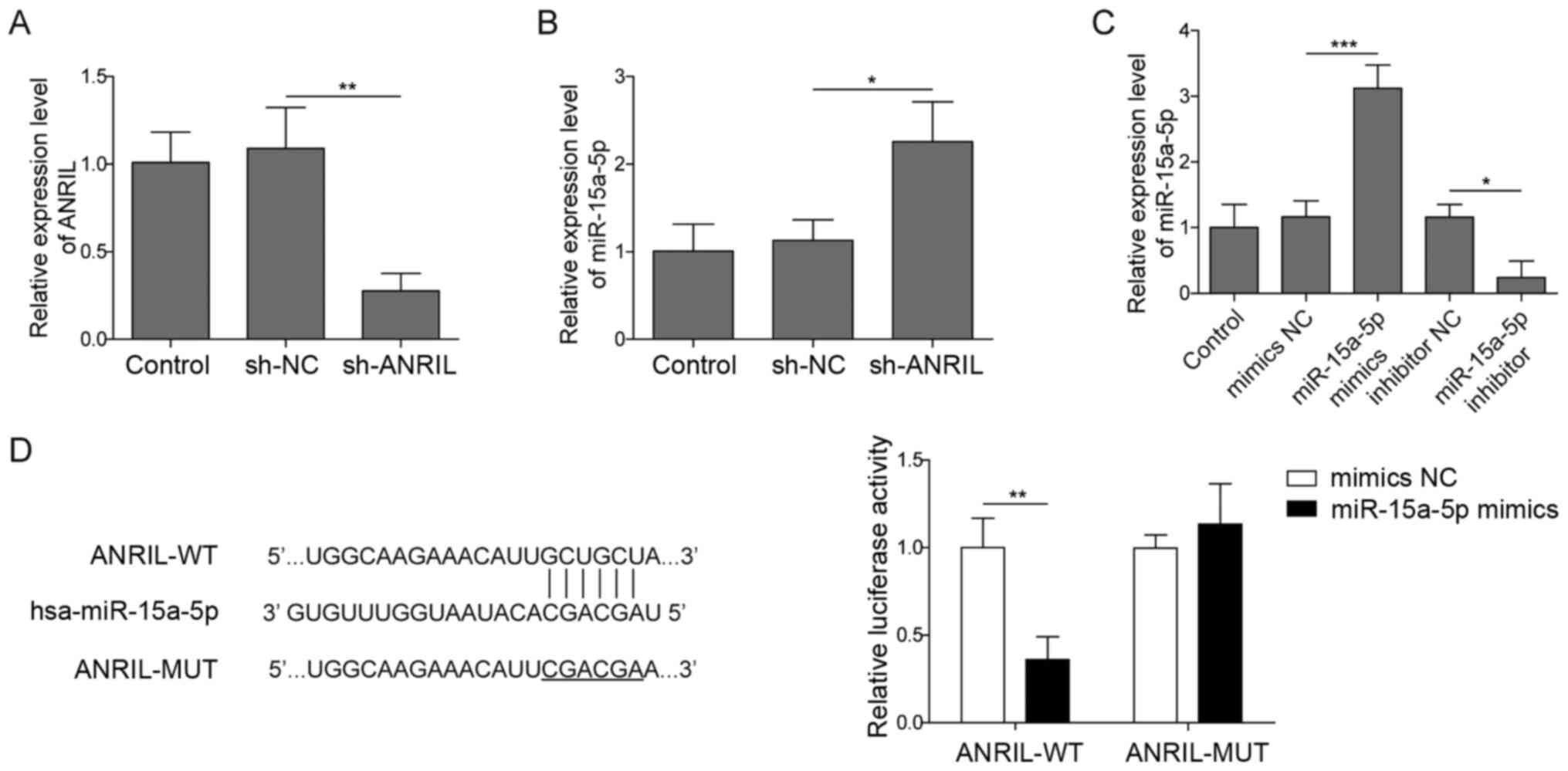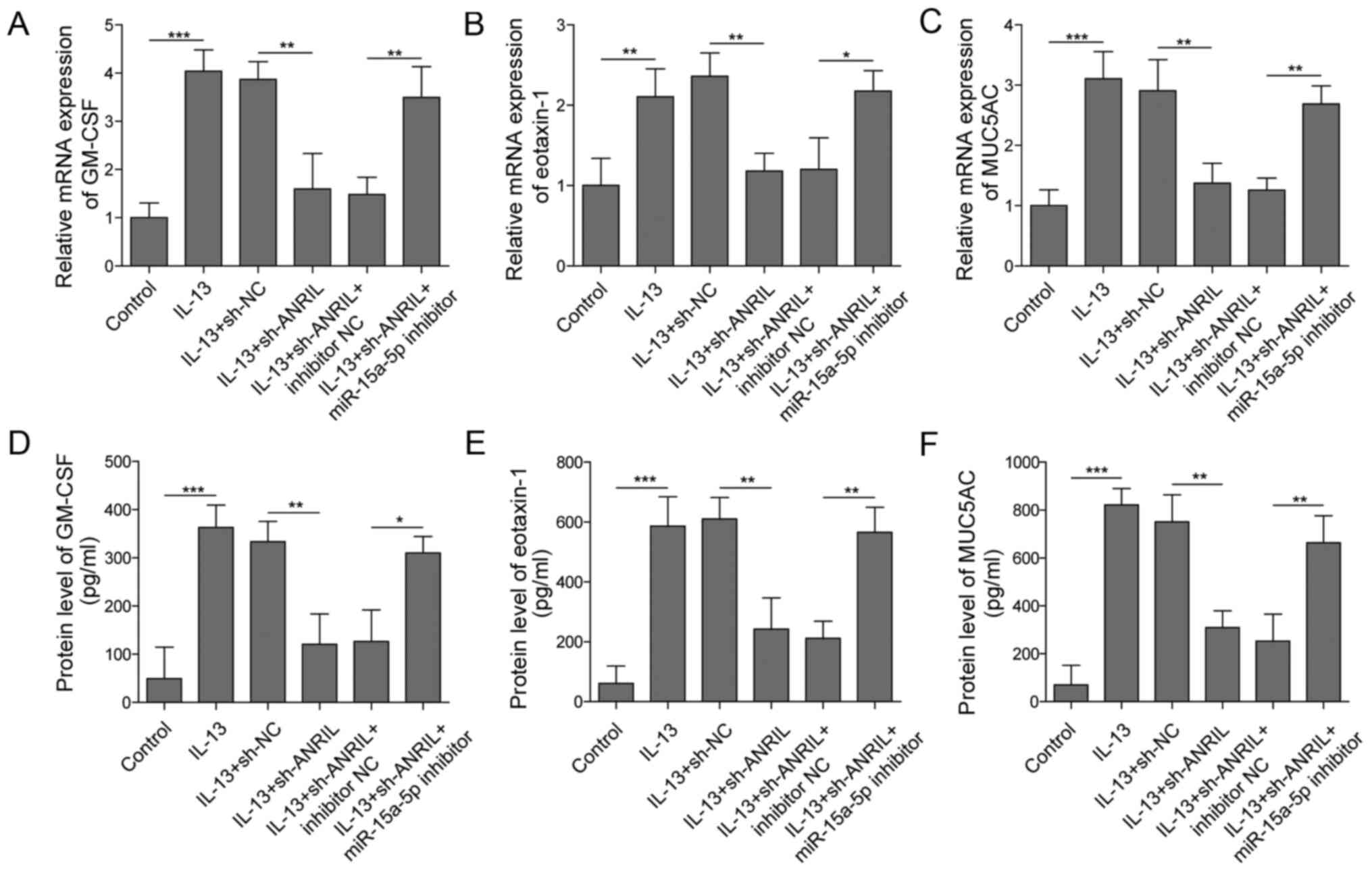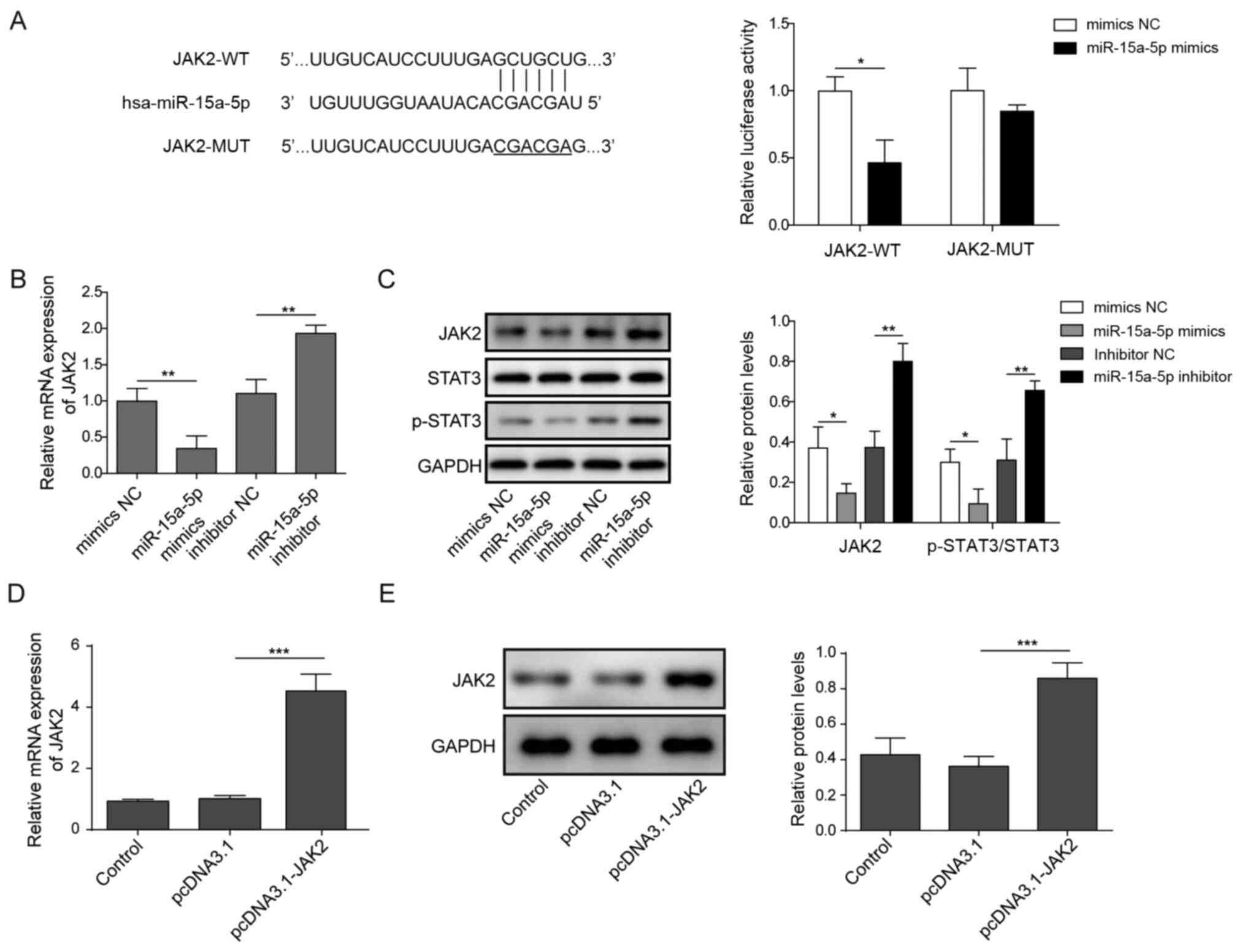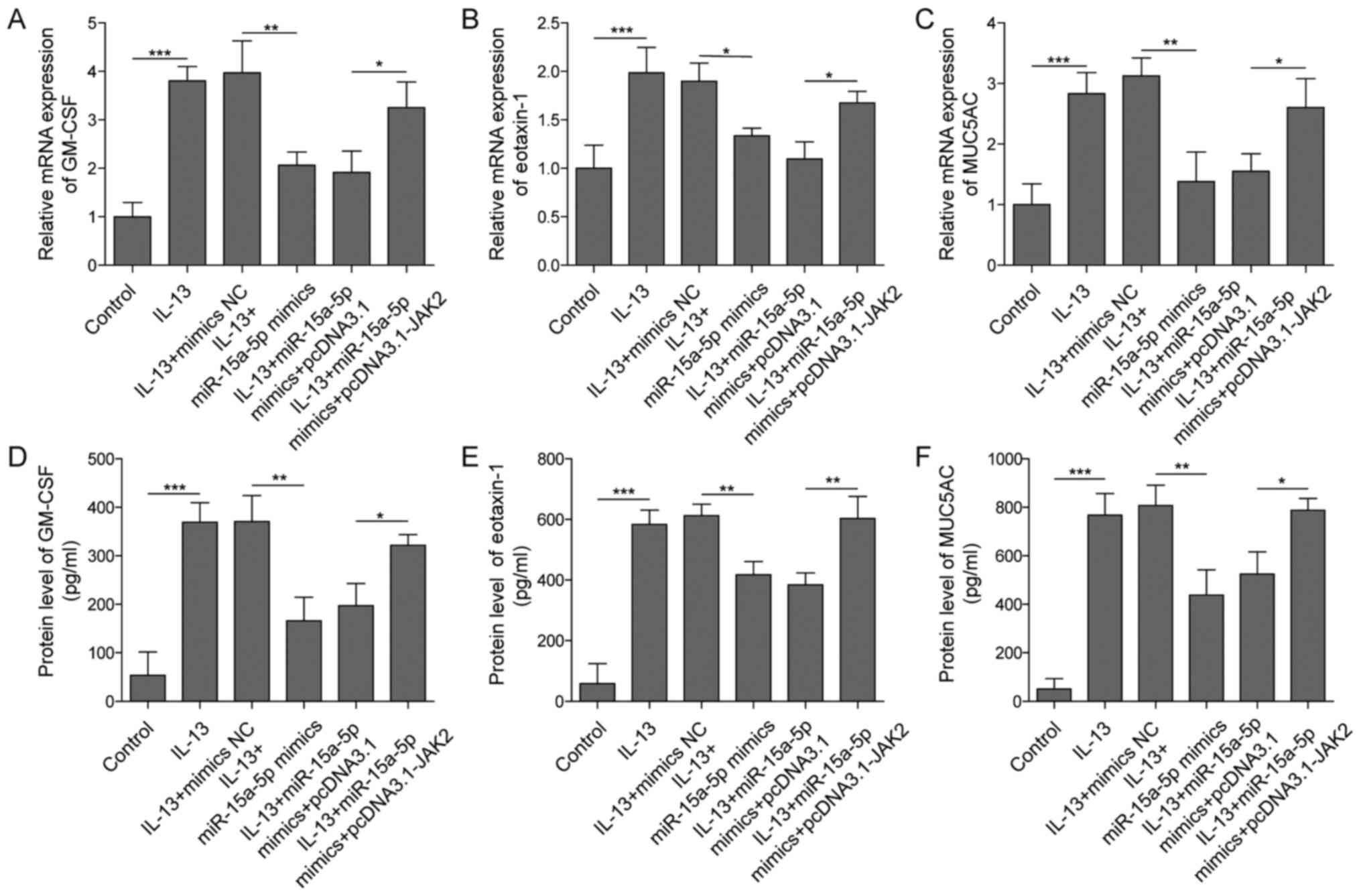|
1
|
Greiner AN, Hellings PW, Rotiroti G and
Scadding GK: Allergic rhinitis. Lancet. 378:2112–2122. 2011.
View Article : Google Scholar : PubMed/NCBI
|
|
2
|
Li L, Zhang L, Mo JH, Li YY, Xia JY, Bai
XB, Xie PF, Liang JY, Yang ZF and Chen QY: Efficacy of indoor air
purification in the treatment of Artemisia pollen-allergic
rhinitis: A randomised, double-blind, clinical controlled trial.
Clin Otolaryngol. 45:394–401. 2020. View Article : Google Scholar : PubMed/NCBI
|
|
3
|
Pazdro-Zastawny K, Kolator M, Krajewska J,
Basiak-Rasała A, Górna S, Paluszkiewicz P, Zatoński M and Zatoński
T: Lifestyle-related factors differentiating the prevalence of
otorhinolaryngological diseases among 6–17-year-olds from Wrocław,
Poland. Int J Pediatr Otorhinolaryngol. 132:1099342020. View Article : Google Scholar : PubMed/NCBI
|
|
4
|
Licari A, Castagnoli R, De Filippo M,
Foiadelli T, Tosca MA, Marseglia GL and Ciprandi G: Current and
emerging biologic therapies for allergic rhinitis and chronic
rhinosinusitis. Expert Opin Biol Ther. 20:609–619. 2020. View Article : Google Scholar : PubMed/NCBI
|
|
5
|
Liu J, Zhang X, Zhao Y and Wang Y: The
association between allergic rhinitis and sleep: A systematic
review and meta-analysis of observational studies. PLoS One.
15:e02285332020. View Article : Google Scholar : PubMed/NCBI
|
|
6
|
Liang ZY, Deng YQ and Tao ZZ: A quantum
dot-based lateral flow immunoassay for the rapid, quantitative, and
sensitive detection of specific IgE for mite allergens in sera from
patients with allergic rhinitis. Anal Bioanal Chem. 412:1785–1794.
2020. View Article : Google Scholar : PubMed/NCBI
|
|
7
|
Kenyon CC, Maltenfort MG, Hubbard RA,
Schinasi LH, De Roos AJ, Henrickson SE, Bryant-Stephens TC and
Forrest CB: Variability in diagnosed asthma in young children in a
large pediatric primary care network. Acad Pediatr. 20:958–966.
2020. View Article : Google Scholar : PubMed/NCBI
|
|
8
|
Choi HS, Kim SL, Kim JH and Lee DS: The
FDA-approved anti-asthma medicine ciclesonide inhibits lung cancer
stem cells through Hedgehog signaling-mediated SOX2 regulation. Int
J Mol Sci. 21:10142020. View Article : Google Scholar
|
|
9
|
Yi L, Cui Y, Xu Q and Jiang Y:
Stabilization of LSD1 by deubiquitinating enzyme USP7 promotes
glioblastoma cell tumorigenesis and metastasis through suppression
of the p53 signaling pathway. Oncol Rep. 36:2935–2945. 2016.
View Article : Google Scholar : PubMed/NCBI
|
|
10
|
Qin X, Zhu S, Chen Y, Chen D, Tu W and Zou
H: Long non-coding RNA (lncRNA) CASC15 is upregulated in
diabetes-induced chronic renal failure and regulates podocyte
apoptosis. Med Sci Monit. 26:e9194152020. View Article : Google Scholar : PubMed/NCBI
|
|
11
|
Zhao J, Pu J, Hao B, Huang L, Chen J, Hong
W, Zhou Y, Li B and Ran P: LncRNA RP11-86H7.1 promotes airway
inflammation induced by TRAPM2.5 by acting as a ceRNA of miRNA-9-5p
to regulate NFKB1 in HBECS. Sci Rep. 10:115872020. View Article : Google Scholar : PubMed/NCBI
|
|
12
|
Liu X, Zhu N, Zhang B and Xu SB: Long
Noncoding RNA TCONS_00016406 attenuates lipopolysaccharide-induced
acute kidney injury by regulating the miR-687/PTEN pathway. Front
Physiol. 11:6222020. View Article : Google Scholar : PubMed/NCBI
|
|
13
|
Yang Y, Zhang Y, Yang Y, Guo J, Yang L, Li
C and Song X: Differential expression of long noncoding RNAs and
their function-related mRNAs in the peripheral blood of allergic
rhinitis patients. Am J Rhinol Allergy. 34:508–518. 2020.
View Article : Google Scholar : PubMed/NCBI
|
|
14
|
Zhu X, Wang X, Wang Y and Zhao Y: Exosomal
long non-coding RNA GAS5 suppresses Th1 differentiation and
promotes Th2 differentiation via downregulating EZH2 and T-bet in
allergic rhinitis. Mol Immunol. 118:30–39. 2020. View Article : Google Scholar : PubMed/NCBI
|
|
15
|
Yue L, Yin X, Hao F, Dong J, Ren X, Xu O
and Shan C: Long noncoding RNA linc00632 inhibits
interleukin-13-induced inflammatory cytokine and mucus production
in nasal epithelial cells. J Innate Immun. 12:116–128. 2020.
View Article : Google Scholar : PubMed/NCBI
|
|
16
|
Qian X, Shi S and Zhang G: Long non-coding
RNA antisense non-coding RNA in the INK4 locus expression
correlates with increased disease risk, severity, and inflammation
of allergic rhinitis. Medicine (Baltimore). 98:e152472019.
View Article : Google Scholar : PubMed/NCBI
|
|
17
|
Li J, Xu X, Wei C, Liu L and Wang T: Long
noncoding RNA NORAD regulates lung cancer cell proliferation,
apoptosis, migration, and invasion by the miR-30a-5p/ADAM19 axis.
Int J Clin Exp Pathol. 13:1–13. 2020.PubMed/NCBI
|
|
18
|
Yan Y, Peng Y, Ou Y and Jiang Y:
MicroRNA-610 is downregulated in glioma cells, and inhibits
proliferation and motility by directly targeting MDM2. Mol Med Rep.
14:2657–2664. 2016. View Article : Google Scholar : PubMed/NCBI
|
|
19
|
Chickooree D, Zhu K, Ram V, Wu HJ, He ZJ
and Zhang S: A preliminary microarray assay of the miRNA expression
signatures in buccal mucosa of oral submucous fibrosis patients. J
Oral Pathol Med. 45:691–697. 2016. View Article : Google Scholar : PubMed/NCBI
|
|
20
|
Wang H, Guo Y, Mi N and Zhou L: miR-101-3p
and miR-199b-5p promote cell apoptosis in oral cancer by targeting
BICC1. Mol Cell Probes. 52:1015672020. View Article : Google Scholar : PubMed/NCBI
|
|
21
|
Hawkins LJ and Storey KB: MicroRNA
expression in the heart of Xenopus laevis facilitates metabolic
adaptation to dehydration. Genomics. 112:3525–3536. 2020.
View Article : Google Scholar : PubMed/NCBI
|
|
22
|
Yang X, Zhu X, Yan Z, Li C, Zhao H, Ma L,
Zhang D, Liu J, Liu Z, Du N, et al: miR-489-3p/SIX1 axis regulates
melanoma proliferation and glycolytic potential. Mol Ther
Oncolytics. 16:30–40. 2019. View Article : Google Scholar : PubMed/NCBI
|
|
23
|
Chen J, Wang J, Li H, Wang S, Xiang X and
Zhang D: p53 activates miR-192-5p to mediate vancomycin induced
AKI. Sci Rep. 6:388682016. View Article : Google Scholar : PubMed/NCBI
|
|
24
|
Shen ED, Liu B, Yu XS, Xiang ZF and Huang
HY: The effects of miR-1207-5p expression in peripheral blood on
cisplatin-based chemosensitivity of primary gallbladder carcinoma.
OncoTargets Ther. 9:3633–3642. 2016. View Article : Google Scholar
|
|
25
|
Vakkilainen S, Mäkitie R, Klemetti P,
Valta H, Taskinen M, Husebye ES and Mäkitie O: A wide spectrum of
autoimmune manifestations and other symptoms suggesting immune
dysregulation in patients with cartilage-hair hypoplasia. Front
Immunol. 9:24682018. View Article : Google Scholar : PubMed/NCBI
|
|
26
|
Ma Z, Teng Y, Liu X, Li J, Mo J, Sha M and
Li Y: Identification and functional profiling of differentially
expressed long non-coding RNAs in nasal mucosa with allergic
rhinitis. Tohoku J Exp Med. 242:143–150. 2017. View Article : Google Scholar : PubMed/NCBI
|
|
27
|
Liu HC, Liao Y and Liu CQ: miR-487b
mitigates allergic rhinitis through inhibition of the IL-33/ST2
signaling pathway. Eur Rev Med Pharmacol Sci. 22:8076–8083.
2018.PubMed/NCBI
|
|
28
|
Wang L, Lv Q, Song X, Jiang K and Zhang J:
ADRB2 suppresses IL-13-induced allergic rhinitis inflammatory
cytokine regulated by miR-15a-5p. Hum Cell. 32:306–315. 2019.
View Article : Google Scholar : PubMed/NCBI
|
|
29
|
Zhu M, Yang M, Yang Q, Liu W, Geng H, Pan
L, Wang L, Ge R, Ji L, Cui S, et al: Chronic hypoxia-induced
microvessel proliferation and basal membrane degradation in the
bone marrow of rats regulated through the IL-6/JAK2/STAT3/MMP-9
pathway. BioMed Res Int. 2020:92047082020.PubMed/NCBI
|
|
30
|
Wang T, Chen D, Wang P, Xu Z and Li Y:
miR-375 prevents nasal mucosa cells from apoptosis and ameliorates
allergic rhinitis via inhibiting JAK2/STAT3 pathway. Biomed
Pharmacother. 103:621–627. 2018. View Article : Google Scholar : PubMed/NCBI
|
|
31
|
Tang H, Wang H, Bai J, Ding M, Liu W, Xia
W, Luo Q, Xu G, Li H and Fang J; Nasal Health Group China, :
Sensitivity of MUC5AC to topical corticosteroid is negatively
associated with interleukin-17A in patients with allergic rhinitis.
Am J Rhinol Allergy. 26:359–364. 2012. View Article : Google Scholar : PubMed/NCBI
|
|
32
|
Zhai KF, Zheng JR, Tang YM, Li F, Lv YN,
Zhang YY, Gao Z, Qi J, Yu BY and Kou JP: The saponin D39 blocks
dissociation of non-muscular myosin heavy chain IIA from TNF
receptor 2, suppressing tissue factor expression and venous
thrombosis. Br J Pharmacol. 174:2818–2831. 2017. View Article : Google Scholar : PubMed/NCBI
|
|
33
|
Zhai KF, Duan H, Cui CY, Cao YY, Si JL,
Yang HJ, Wang YC, Cao WG, Gao GZ and Wei ZJ: Liquiritin from
glycyrrhiza uralensis attenuating rheumatoid arthritis via reducing
inflammation, suppressing angiogenesis, and inhibiting MAPK
signaling pathway. J Agric Food Chem. 67:2856–2864. 2019.
View Article : Google Scholar : PubMed/NCBI
|
|
34
|
Livak KJ and Schmittgen TD: Analysis of
relative gene expression data using real-time quantitative PCR and
the 2(−∆∆C(T)) Method. Methods. 25:402–408. 2001. View Article : Google Scholar : PubMed/NCBI
|
|
35
|
Zhai KF, Duan H, Chen Y, Khan GJ, Cao WG,
Gao GZ, Shan LL and Wei ZJ: Apoptosis effects of imperatorin on
synoviocytes in rheumatoid arthritis through
mitochondrial/caspase-mediated pathways. Food Funct. 9:2070–2079.
2018. View Article : Google Scholar : PubMed/NCBI
|
|
36
|
Ma Y, Shi L and Zheng C: Microarray
analysis of lncRNA and mRNA expression profiles in mice with
allergic rhinitis. Int J Pediatr Otorhinolaryngol. 104:58–65. 2018.
View Article : Google Scholar : PubMed/NCBI
|
|
37
|
Teng Y, Zhang R, Liu C, Zhou L, Wang H,
Zhuang W, Huang Y and Hong Z: miR-143 inhibits
interleukin-13-induced inflammatory cytokine and mucus production
in nasal epithelial cells from allergic rhinitis patients by
targeting IL13Rα1. Biochem Biophys Res Commun. 457:58–64. 2015.
View Article : Google Scholar : PubMed/NCBI
|
|
38
|
Incorvaia C, Cavaliere C, Frati F and
Masieri S: Allergic rhinitis. J Biol Regul Homeost Agents. 32
(Suppl 1):61–66. 2018.PubMed/NCBI
|
|
39
|
Zhou B, Li L, Qiu X, Wu J, Xu L and Shao
W: Long non-coding RNA ANRIL knockdown suppresses apoptosis and
pro-inflammatory cytokines while enhancing neurite outgrowth via
binding microRNA-125a in a cellular model of Alzheimer's disease.
Mol Med Rep. 22:1489–1497. 2020. View Article : Google Scholar : PubMed/NCBI
|
|
40
|
Ping Y, Zhou Y, Hu J, Pang L, Xu C and
Xiao Y: Dissecting the functional mechanisms of somatic copy-number
alterations based on dysregulated ceRNA networks across cancers.
Mol Ther Nucleic Acids. 21:464–479. 2020. View Article : Google Scholar : PubMed/NCBI
|
|
41
|
Wu H, Tian X and Zhu C: Knockdown of
lncRNA PVT1 inhibits prostate cancer progression in vitro and in
vivo by the suppression of KIF23 through stimulating miR-15a-5p.
Cancer Cell Int. 20:2832020. View Article : Google Scholar : PubMed/NCBI
|
|
42
|
Zhu Y, Zhang X, Wang L, Zhu X, Xia Z, Xu L
and Xu J: FENDRR suppresses cervical cancer proliferation and
invasion by targeting miR-15a/b-5p and regulating TUBA1A
expression. Cancer Cell Int. 20:1522020. View Article : Google Scholar : PubMed/NCBI
|
|
43
|
Lou Y and Huang Z: microRNA-15a-5p
participates in sepsis by regulating the inflammatory response of
macrophages and targeting TNIP2. Exp Ther Med. 19:3060–3068.
2020.PubMed/NCBI
|
|
44
|
Yu L, Liu Z, He W, Chen H, Lai Z, Duan Y,
Cao X, Tao J, Xu C, Zhang Q, et al: Hydroxysafflor yellow A confers
neuroprotection from focal cerebral ischemia by modulating the
crosstalk between JAK2/STAT3 and SOCS3 signaling pathways. Cell Mol
Neurobiol. 40:1271–1281. 2020. View Article : Google Scholar : PubMed/NCBI
|
|
45
|
Fang XY, Zhang H, Zhao L, Tan S, Ren QC,
Wang L and Shen XF: Corrigendum to ‘A new xanthatin analogue
1β-hydroxyl-5α-chloro-8-epi-xanthatin induces apoptosis through
ROS-mediated ERK/p38 MAPK activation and JAK2/STAT3 inhibition in
human hepatocellular carcinoma’ [Biochimie 152C (2018) 43–52].
Biochimie. 171-172:21–22. 2020. View Article : Google Scholar : PubMed/NCBI
|
|
46
|
Wang J, Du A, Wang H and Li Y: MiR-599
regulates LPS-mediated apoptosis and inflammatory responses through
the JAK2/STAT3 signaling pathway via targeting ROCK1 in human
umbilical vein endothelial cells. Clin Exp Pharmacol Physiol.
47:1420–1428. 2020. View Article : Google Scholar : PubMed/NCBI
|
|
47
|
Peng DH, Liu YY, Chen W, Hu HN and Luo Y:
Epidermal growth factor alleviates cerebral ischemia-induced brain
injury by regulating expression of neutrophil gelatinase-associated
lipocalin. Biochem Biophys Res Commun. 524:963–969. 2020.
View Article : Google Scholar : PubMed/NCBI
|
|
48
|
Kabiri M, Hemmatpour A, Zare F,
Hadinedoushan H and Karimollah A: Paroxetine modulates immune
responses by activating a JAK2/STAT3 signaling pathway. J Biochem
Mol Toxicol. 34:e224642020. View Article : Google Scholar : PubMed/NCBI
|















